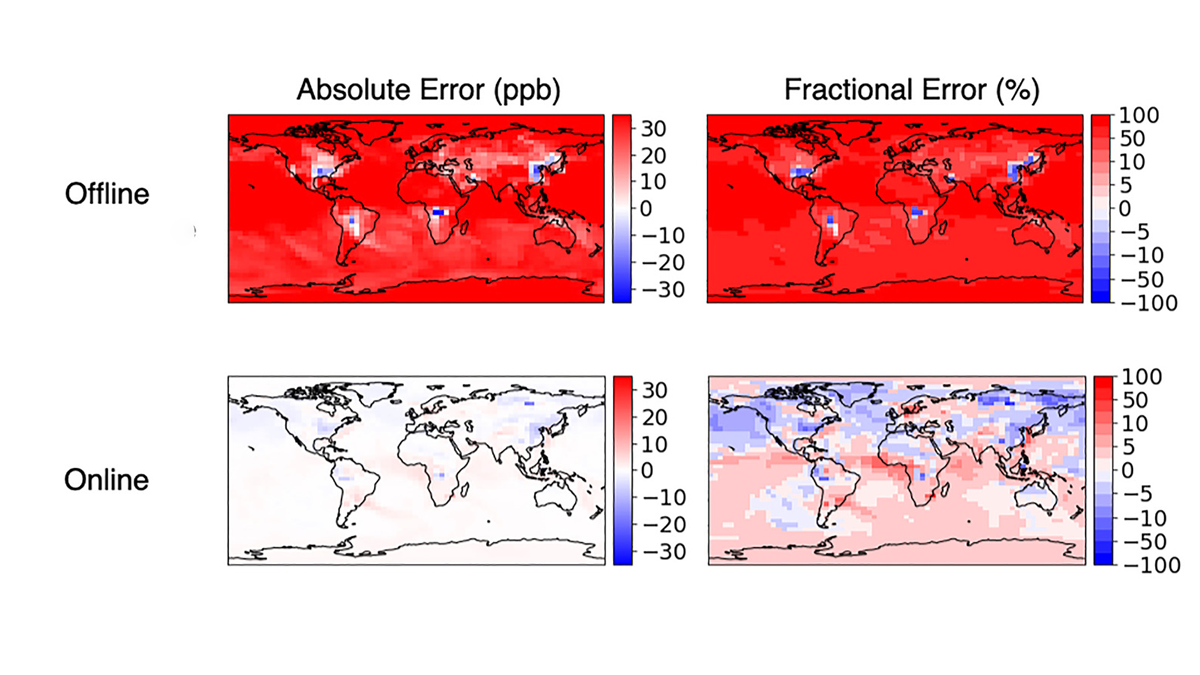Editors’ Highlights are summaries of recent papers by AGU’s journal editors.
Source: Journal of Advances in Modeling Earth Systems
Incorporation of comprehensive atmospheric chemistry over a large region or the globe in Earth System Models (ESM) is currently infeasible due to integrating high-dimensional chemical mechanisms which would excessively slow down a model simulation. Machine learning (ML) emulation of computationally expensive ESM components could be transformative for reducing the cost of a simulation by replacing the reference solver with a faster emulator, but past work found that these ML models experience rapid error growth and become unstable over time.
Kelp et al. [2022] demonstrate the capability of a neural network ML solver for the first time to stably emulate tropospheric chemistry in the GEOS-Chem global 3-D model over full-year simulations while achieving a five-fold speedup. They find that online training of the ML solver synchronously with a GEOS-Chem simulation produces more accurate and stable results than the typical ML practice of offline training from a static data set of simulation results. The results show that, even without in-depth training optimization, the online training yields greater accuracy and stability than offline learning while precluding the storage of big data.
The online learning approach presented in this work could be applied more generally to other domains in Earth System Modeling to emulate complex processes for purposes of speedup and enhanced stability.
Citation: Kelp, M. M., Jacob, D. J., Lin, H., & Sulprizio, M. P. (2022). An online-learned neural network chemical solver for stable long-term global simulations of atmospheric chemistry. Journal of Advances in Modeling Earth Systems, 14, e2021MS002926. https://doi.org/10.1029/2021MS002926
—Jiwen Fan, Editor, Journal of Advances in Modeling Earth Systems

